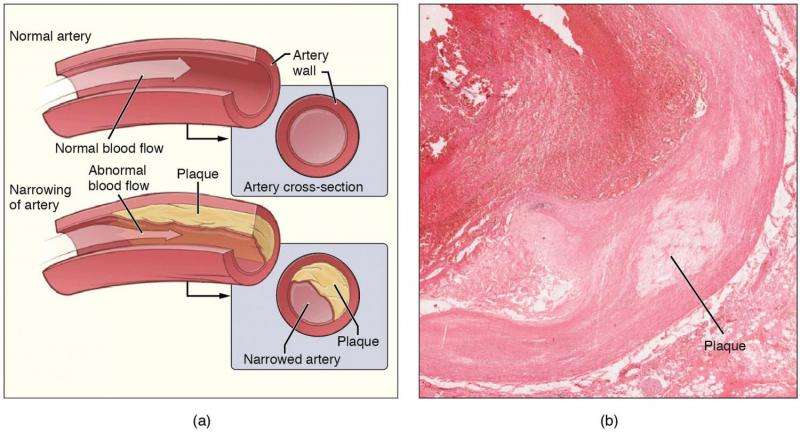This article has been reviewed according to Science X's editorial process and policies. Editors have highlighted the following attributes while ensuring the content's credibility:
fact-checked
peer-reviewed publication
trusted source
proofread
Researchers uncover key therapeutic target involved in diabetic atherosclerosis

Diabetes accelerates the development of atherosclerosis, increasing the incidence of cardiovascular events. In atherosclerosis, immune cells called macrophages release molecules such as chemokines and cytokines, causing inflammation and leading to arterial plaque formation.
However, significant gaps persist in understanding the exact molecular mechanisms controlling this increased inflammatory response in individuals with diabetes.
In a new, preclinical study, researchers from Brigham and Women's Hospital, a founding member of the Mass General Brigham health care system, identified a long non-coding RNA (lncRNA) sequence that could help them unravel the complex processes underlying diabetic atherosclerosis, potentially paving the way for future therapeutic interventions in humans. The work has been published in Cell Reports.
Through genetic analysis of a mouse model of diabetic atherosclerosis, the research team identified a specific sequence of long-noncoding RNA, they named MERRICAL, which is involved in recruiting macrophages to the arterial wall.
As atherosclerosis progressed in these mice, the researchers found a notable increase in the expression of MERRICAL at arterial lesions—areas where atherosclerosis plaque built up and damaged the arteries.
Furthermore, when the research team therapeutically delivered inhibitors to reduce MERRICAL expression levels, they observed an impressive reduction in macrophage recruitment and in atherosclerosis and aortic lesion formation (74% in the aortic sinus and 86% in the descending aorta).
"Our work provides new insights for targets that underlie the impaired responses in the vessel walls in diabetes and identifies a key therapeutic target for reversing the accelerated atherosclerosis in diabetes," said Mark W. Feinberg, MD, a cardiologist and Associate Professor of Medicine of the Brigham's Heart and Vascular Center and Harvard Medical School, Boston.
More information: Deficiency of lncRNA MERRICAL abrogates macrophage chemotaxis and diabetes-associated atherosclerosis, Cell Reports (2024). DOI: 10.1016/j.celrep.2024.113815. www.cell.com/cell-reports/full … 2211-1247(24)00143-8



















